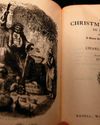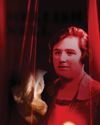
Q: What exactly is a trench?
A: Trenches are defensive structures that have been used in conflicts right up to the present day, but they are perhaps most commonly associated with combat during World War I.
In its simplest form, the classic British trench used during the 1914-18 war was about six feet deep and three and half feet wide. It had a fire step, which was about 18 x 18 inches, where soldiers could stand and shoot at the enemy. In front of the trench there was a parapet, which was about three feet tall and six feet deep, to protect soldiers from bullets. Behind the trench, there was a similar structure called a parados. Trenches could also have an A-frame, with wood and chicken wire riveting to prevent collapse. However, it's important to note that trenches varied in design and structure depending on the location and circumstances. Some were just ditches, while others were concreted. But their main purpose was to provide a safe place for soldiers to defend themselves against the enemy.
Q: How far did they stretch?
A: The trenches stretched from the North Sea all the way down to Switzerland, covering a distance of about 475 miles. However, this was just the front line; there were also communication trenches, support lines, and lines that stretched back from the front line. So, that's an approximate distance of 1,500 miles.
But that's not all. There were many other trenches - sometimes multiple systems of trenches - stretching many thousands of miles. It's quite a remarkable feat when you think about it, but also important to remember that it was the soldiers who had to dig them, which was a very difficult task.
Q: How was trench warfare on the Eastern Front different to that on the Western Front?
هذه القصة مأخوذة من طبعة July 2023 من BBC History Revealed.
ابدأ النسخة التجريبية المجانية من Magzter GOLD لمدة 7 أيام للوصول إلى آلاف القصص المتميزة المنسقة وأكثر من 9,000 مجلة وصحيفة.
بالفعل مشترك ? تسجيل الدخول
هذه القصة مأخوذة من طبعة July 2023 من BBC History Revealed.
ابدأ النسخة التجريبية المجانية من Magzter GOLD لمدة 7 أيام للوصول إلى آلاف القصص المتميزة المنسقة وأكثر من 9,000 مجلة وصحيفة.
بالفعل مشترك? تسجيل الدخول

'Dickens's evocation of the fears, excitement and confusion of childhood is peerless'
DR LEE JACKSON ON WHY CHARLES DICKENS REMAINS RELEVANT TODAY

THE AUTHOR GOES ABROAD
Dickens expanded his horizons and boosted his fan-base by venturing overseas - but global fame came with a cost

REVIVING THE FESTIVE SPIRIT
A Christmas Carol wasn't just a bestseller - it changed the way that Britons chose to mark the festive season

GIVING THE POOR A VOICE
From Hard Times to Oliver Twist, Charles Dickens used his pen to help illuminate the lives of the less fortunate

A JOURNEY THROUGH DICKENS'S LONDON
The works of Charles Dickens are synonymous with visions of Victorian London. We talk to Dr Lee Jackson about the author's love of the capital, and the locations that most inspired him

EXCEEDING EXPECTATIONS
Dr Lee Jackson chronicles Charles Dickens's journey from down-at-luck teenager to titan of Victorian literature

GIFTS, TREES & FEASTING
We take a journey through the photo archives to reveal how Christmas and its many traditions have been celebrated over the years - and around the world

WHAT GREAT PAINTINGS SAY
We explore the story behind an allegorical painting that celebrates the triumph of love over hate, peace over war

HELLISH NELL
Malcolm Gaskill delves into the life of Helen Duncan - the fraudulent Scottish medium whose ectoplasm-filled seances saw her ending up on the wrong side of the law

7 THINGS YOU (PROBABLY) DIDN'T KNOW ABOUT THE WHITE HOUSE
Presidential historian Dr Lindsay M Chervinsky reveals some of the most surprising facts about the world-famous US residence